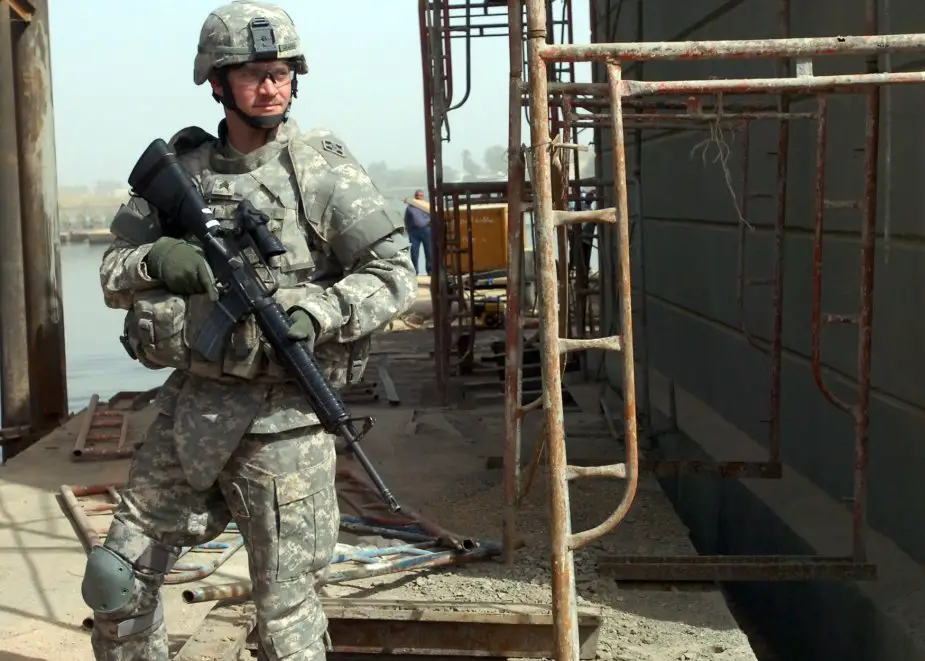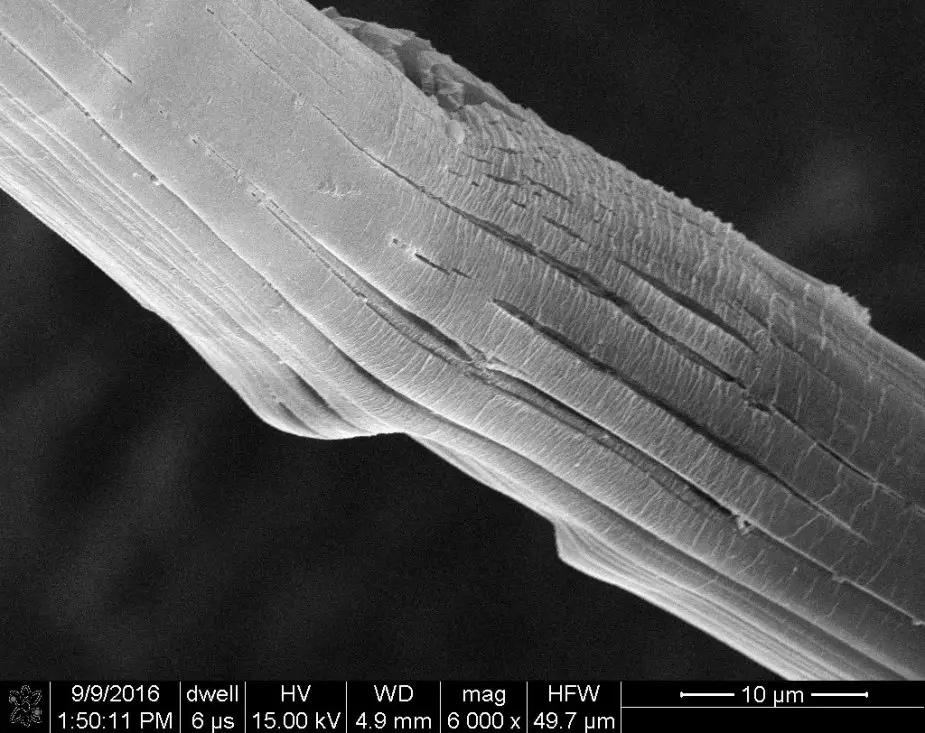U.S. soldier armor, such as bulletproof vests and helmets, depends upon high-performance ballistic fibers for its strength and effectiveness. Army researchers are experimenting with how they can improve armor by making it lighter and stronger. At the U.S. Army Combat Capabilities Development Command’s Army Research Laboratory, researchers examine high-performance fibers in an innovative soft armor research program.
Follow Army Recognition on Google News at this link

Sgt. Michael Graham, 4th Infantry Division, wears an Improved Outer Tactical Vest. Army scientists conduct basic research on high-performance fibers with the goal of making future armor even stronger and lighter (Picture source: U.S. Army)
By understanding how fibers behave under stress, researchers can predict their performance during a ballistic event. With this information, researchers can leverage a materials-by-design approach to create stronger, more effective body armor. “The fibers we’re talking about are about 15-30 micrometers in diameter or half the size of a human hair,” said Dr. Kenneth Strawhecker, a materials engineer at the laboratory. “The fibers can be layers of woven fabric or cross-plies of unidirectional sheets.”
The Army researchers partner with U.S. industrial fiber manufacturers to study about the structure inside single fibers and how it influences the strength and stiffness of the fibers. “High-performance fibers have a stringy structure like string cheese, where the strings are called fibrils,” Strawhecker said. “We have learned how to use a gallium-ion beam [a device that resembles a scanning electron microscope] to mill notches in the fiber so that we can carefully peel it open and then use atomic force microscopy to observe the fibrils inside.”
Atomic force microscopy examines material surfaces at the extremely small scale -- on the order of fractions of a nanometer. Strawhecker uses the analogy of a tiny version of a blind man tapping his cane along the inside of the fiber. This is how atomic force microscopy maps the fibrils for length and width, he said. “If we tap the cane -- the AFM probe -- harder, we can determine how stiff the fibrils are,” he said. “Or, if we push a probe in between the fibrils we determine the strength between the fibrils.”
The researchers discovered that these fibrils tend to form bundles of fibrils. “We measured the energy to separate the bundles for different fibers,” Strawhecker said. “The result we found is that some bundles offered more resistance to separation than others, depending upon the chemical makeup or the processing of the material.”
These findings leave the researchers optimistic that as they look at smaller and smaller structures within a fiber, they will understand what holds them together. “Long polymer molecules form crystals which group into nano-fibrils, which group into fibril bundles, which group into single fibers,” Strawhecker said. “At each size, we have found that there is a similar resistance to the separation between these parts for a fiber with given chemical makeup and processing history”.
Understanding this structure means knowing how molecules are arranged together to form structures that ultimately will stop a bullet for the soldier. “Determining the best way to arrange them can be based upon these models and it depends on finding the strongest, stiffest overall fiber structure due to the arrangements within,” he said.
The American Chemical Society published this research as a cover in its Applied Materials & Interfaces, May 13, 2020, Vol. 12, Issue 19. The lead author for the paper, Dr. Taylor Stockdale, performed many of the experiments as a doctoral student at the University of Nebraska-Lincoln using techniques learned as an intern with Strawhecker at the lab’s Rodman Materials Research Laboratory during the summer of 2015. Stockdale learned how to use the lab’s focused-ion beam instrument to shoot a beam of gallium ions at fiber to mill out notches in the fiber. With those notches in place, he carefully used an ultra-fine platinum wire (typically used by a scanning transmission microscope to image atomic features) to dig-out and unzip the top half of the fibers, uncovering their interior -- like opening a convertible automobile, Strawhecker said. “Stockdale learned how to mount them sideways on sticky tape to expose the interior structures,” he said. “This technique has now been used by my team as part of nine (and counting) peer-reviewed publications in less than five years.”
Strawhecker said the initial work earned now-Dr. Stockdale the 2015 Army Research Laboratory Graduate Student Summer Internship award for Best Paper and resulted in the seminal publication of the mounting technique. “The lab’s summer student program and Open Campus business model resulted in this special sample mounting technique, which has really opened a world of possibilities for fiber research,” Strawhecker said.
Besides U.S. fiber manufacturers, collaborative partners include the University of Nebraska-Lincoln, Northeastern University, CCDC Soldier Center, University of Delaware and Drexel University.

U.S. Army researchers analyze high-performance fibers with a scanning electron microscope (Picture source: U.S. Army)
The Army goal is to make armor lighter and reduce bulk and burden on the warfighter. This research fundamentally approaches the building block of armor packages, which comprises a large percentage of the overall Soldier burden.
As new experimental fibers are being produced, he said, the laboratory will continue to partner with manufacturers using these special techniques to understand how new chemistry and processing steps may change the structure and performance of the next generation of fiber materials. “The future Soldier requires a reduction in burden and an ever-changing need for protection,” Strawhecker said. “In the long-term, to satisfy these needs, Army researchers must continually enhance current armor structures as well as develop new armor materials. The fact that fiber manufacturers are working with the Army to make these changes now is very encouraging to me.”














